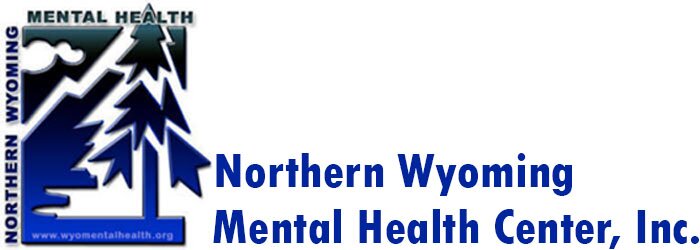Introduction to Specific Learning Disorder

The 5th edition of the Diagnostic and Statistical Manual of Mental Disorders released in 2013 made changes to the Learning Disorders category. Prior to this edition, there were 3 separate disorders including Reading Disorder, Mathematics Disorder, and Disorder of Written Expression.
Now, there is a single disorder, Specific Learning Disorder, which has multiple academic areas (reading, written expression, and mathematics) and then skills within each of those areas that can be impaired. There are also 3 levels of severity that can be diagnosed which guide the amount of assistance that will be needed to allow the student to compensate or function well within that area.
It is important to remember that, regardless of the name of the learning disorder, it is a true clinical disorder that is likely founded in abnormal brain development. These are not just labels given to excuse poor performance in otherwise normal students. There are actual issues with the way th...More
Fast Facts: Learn! Fast!
What is Specific Learning Disorder?
- Prior to the 2013 edition of the DSM, there were 3 separate disorders including Reading Disorder, Mathematics Disorder, and Disorder of Written Expression.
- Now, there is a single disorder, Specific Learning Disorder, which has multiple academic areas (reading, written expression, and mathematics) and then skills within each of those areas that can be impaired.
- There are also 3 levels of severity that can be diagnosed which guide the amount of assistance that will be needed to allow the student to compensate or function well within that area.
- It is important to remember that, regardless of the name of the learning disorder, it is a true clinical disorder that is likely founded in abnormal brain development.
- Special assistance and learning programs are often available through schools (both public and private) for students with learning disabilities.
What are the symptoms of Specific Learning Disorder
- Specific Learning Disorder is diagnosed when there are difficulties learning and using academics skills for at least 6 months in one or more of the following areas:
- Inaccurate or slow word reading
- Difficulty understanding the meaning of what is read
- Difficulties with spelling
- Difficulties with written expression
- Difficulties mastering number sense, number facts or calculation
- Difficulties with mathematical reasoning
- In addition to one or more on the above areas being affected, a few other items are required for a diagnosis including:
- The affected skills must be substantially below those expected for the child\'s age.
- The issues need to cause significant problems with academic performance.
- The problems begin during the school-age years, but may not become fully noticeable until academic demands become high, such as taking timed tests, completing long reports that have short deadlines, or very heavy homework levels.
- The learning disabilities are not the result of other issues, such as intellectual disabilities, uncorrected visual or hearing problems, other mental or neurological disorders, or inadequate teaching in those academic areas.
- The academic areas and subskills that can be diagnosed as impaired include:
- Impairment in Reading - word reading accuracy; reading rate or fluency; reading comprehension.
- Impairment in Written Expression - spelling accuracy; grammar and punctuation accuracy; clarity or organization of written expression
- Impairment in Mathematics - number sense; memorization of arithmetic facts; accurate or fluent calculation; accurate math reasoning
What is the developmental course of Specific Learning Disorder
- According to the DSM-5, the diagnosis of specific learning disorder generally occurs in elementary school as children are required to begin learning reading, writing and math skills.
- However, there can be signs that appear prior to that time.
- For example, preschool children may not show an interest in learning rhymes or playing games that involve repetition. They may also continue to use \"baby talk\" or have trouble identifying letters of the alphabet including those in their own name.
- Elementary school children typically display problems with spelling, reading aloud, and reading single syllable words.
- In math areas, they may have problems learning basic math facts and procedures for adding and subtracting.
- As they progress into middle school, problems with reading or math comprehension can begin to appear.
- Adolescents may continue to show these problems around comprehension, spelling and grammar rules, and be unable to master math facts.
How common is Specific Learning Disorder and what are the risk factors?
- According to the DSM-5, "the prevalence of specific learning disorder across the academic domains of reading, writing, and mathematics is 5-15% among school-age children across different languages and cultures. Prevalence in adults is unknown, but appears to be approximately 4%."
- There are both environmental and genetic factors that have been identified for the development of specific learning disorder.
- Environmental factors include premature delivery, very low birth weight, and exposure to nicotine/smoking during prenatal development.
- Resesrch has found that a genetic component to specific learning disorder in that it tends to occur in families.
- The DSM-5 states that the risk of developing specific learning disorder in reading is 4-8 times higher and 5-10 times higher in math for those that have a first degree relative that has the disorder (parent or sibling).
- Parents who have literacy problems or dyslexia are much more likely to have a child that has similar problems, which seems to indicate a combination of environmental and genetic factors.
- Specific learning disorder has been found to commonly exist with several other disorders and conditions including ADHD, Communication Disorders, Developmental Coordination Disorder, Autism Spectrum Disorder, Anxiety Disorders, and Depressive and Bipolar Disorders.
How is Specific Learning Disorder treated?
- People with learning disabilities and disorders can learn strategies for coping with their disabilities.
- If learning disabilities remain untreated, a child may begin to feel frustrated with schoolwork, which can lead to low self-esteem, depression, and other problems.
- Children diagnosed with learning and other disabilities in most states, territories and provinces can generally qualify for special educational services.
- For children that have specific language disorder with impairment in reading, interventions can include special teaching techniques, classroom modifications, and use of technology.
- For children that have specific language disorder with impairment in written expression, interventions can include special tools, use of technology, and other ways of reducing the need for writing.
- For children that have specific language disorder with impairment in mathmatics, interventions can include visual techniques, use of memory aids, and use of computers.
- A child with specific learning disorder may struggle with low self-esteem, frustration, and other problems. Mental health professionals, including school counselors or psychologists, can help the child understand these feelings, develop coping tools, and build healthy relationships.
Resources
-
Articles
-
Questions and Answers
- Do I Have a Mental Condition?
- Too Much Time doing Homework
- What\'s the matter?
- performance
- ADD
-
Book & Media Reviews
- Don't Bother Me Mom--I'm Learning!
- Incorporating Social Goals in the Classroom
- Learning Outside the Lines
- Ready or Not, Here Life Comes
- The Nature of Intelligence
- The Survival Guide for Kids With LD*
- Why Don't Students Like School
-
Links
- [2] Associations
- [1] Community
- [2] Information
- [3] Journals
- [1] Services
- [21] Videos
-
Videos
- Learning Struggles: What Can a Parent Do?
- Early Signs of a Learning Disability or Learning Disorder
- Common Learning Disabilities
- Student Voices: What Really Matters to Young Adults With Learning and Attention Issues
- Learning Disabilities, What Are the Different Types?
- How Much Do You Know About Dyslexia?
- Stress Relief Tips for People with Learning Disabilities
- Making Friends When You Have a Learning Disability
- Parenting a Child with Dyslexia: A Mom Shares Her Story
- Learning About Learning Disabilities
-
11 more
- What is dyslexia?
- The gift of dyslexia
- Ask the Expert Helping Children with ADHD LD Conquer Chronic Stress
- Children's Communication Challenges: Is it Attention, Language or Both?
- What Are Learning Disabilities?
- What Causes Learning Disabilities?
- What Is an IEP?
- How Do I Request an Evaluation?
- Steps Parents Should Take Once Their Child is Identified with A Learning Disability
- What Is Dyslexia?
- What Is Dyscalculia?
-
More Information
- An Interview with Steven Richfield, PsyD, on the Parent Coach
Topics
-
Related Topic Centers
-
Addictions
-
Aging & Elder Care
-
Assessments & Interventions
-
Career & Workplace
-
Emotional Well-Being
-
Life Issues
-
Parenting & Child Care
-
Abuse
-
ADHD: Attention Deficit Hyperactivity Disorder
-
Adoption
-
Autism
-
Child & Adolescent Development: Overview
-
Child & Adolescent Development: Puberty
-
Child Development & Parenting: Early (3-7)
-
Child Development & Parenting: Infants (0-2)
-
Child Development & Parenting: Middle (8-11)
-
Child Development & Parenting:Adolescence (12-24)
-
Child Development Theory: Adolescence (12-24)
-
Child Development Theory: Middle Childhood (8-11)
-
Childhood Mental Disorders and Illnesses
-
Childhood Special Education
-
Divorce
-
Family & Relationship Issues
-
Intellectual Disabilities
-
Learning Disorders
-
Oppositional Defiant Disorder
-
Parenting
-
Self Esteem
-
-
Psychological Disorders
-
Anxiety Disorders
-
Bipolar Disorder
-
Conversion Disorders
-
Depression: Depression & Related Conditions
-
Dissociative Disorders
-
Domestic Violence and Rape
-
Eating Disorders
-
Impulse Control Disorders
-
Intellectual Disabilities
-
Mental Disorders
-
Obsessive-Compulsive Spectrum Disorders
-
Personality Disorders
-
Post-Traumatic Stress Disorder
-
Schizophrenia
-
Sexual Disorders
-
Somatic Symptom and Related Disorders
-
Suicide
-
Tourettes and other Tic Disorders
-
